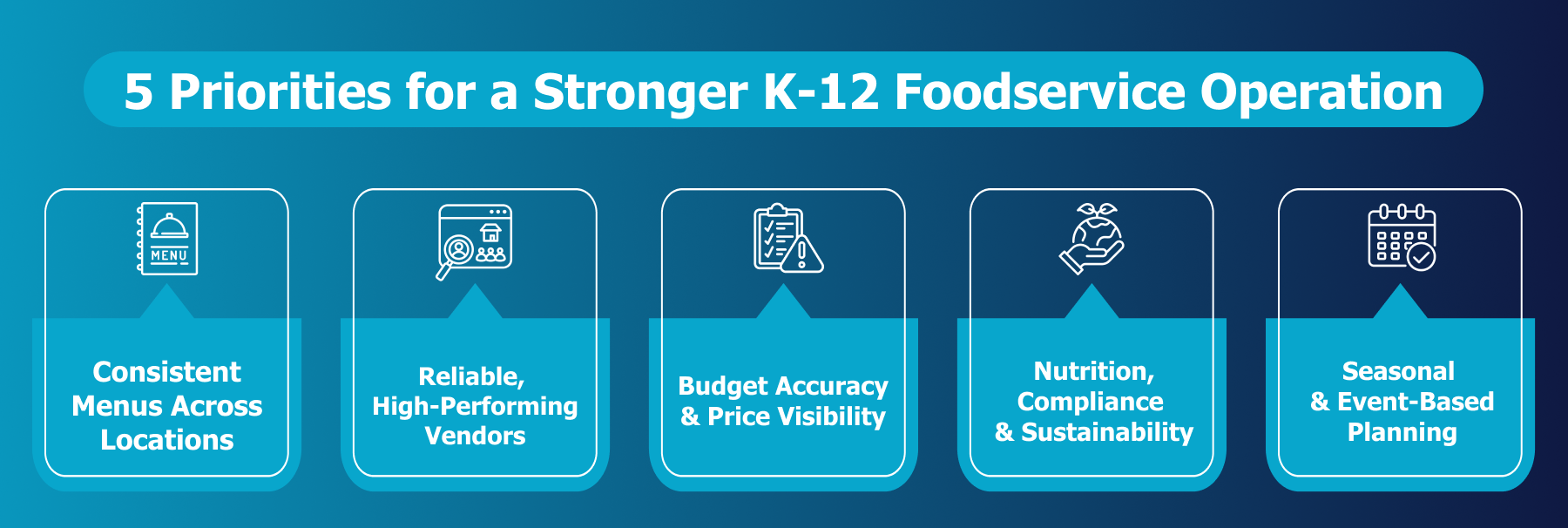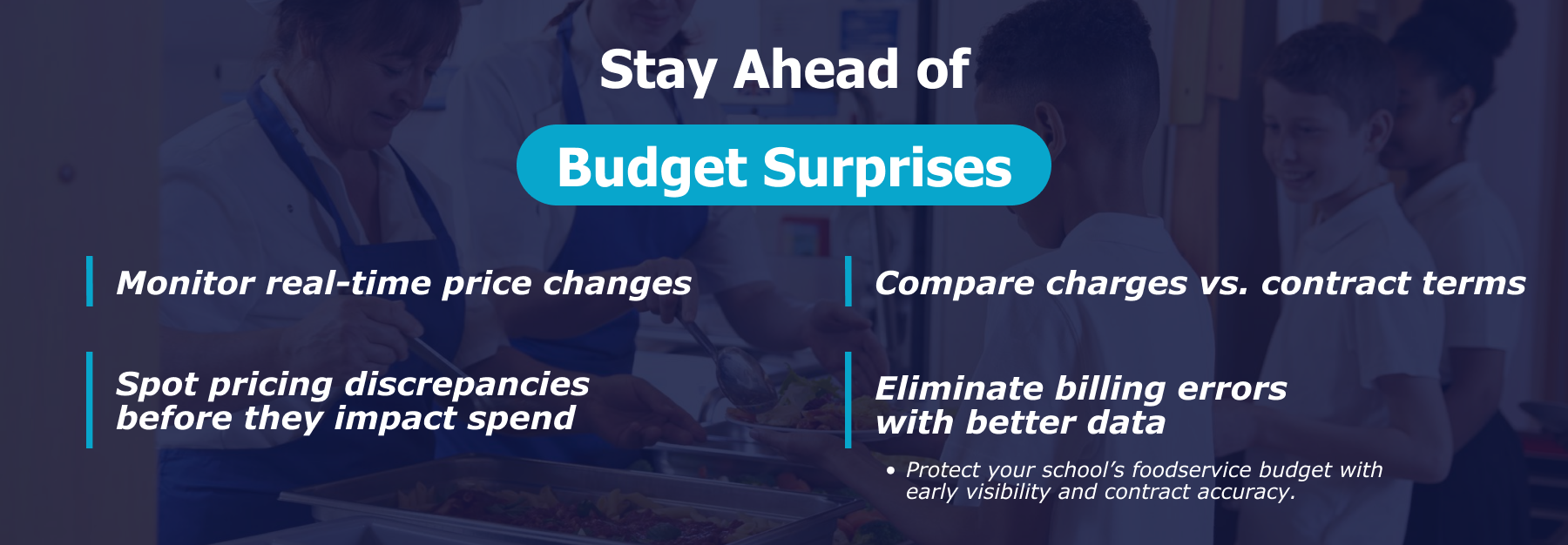Why is strong K-12 foodservice management the key to smooth, stress-free school operations? As cafeterias prepare to open their doors again, foodservice teams across the country are focused on more than just the back-to-school rush. August is the perfect time to evaluate what worked last year, address what didn’t, and implement changes that will strengthen operations for the months ahead.
For those overseeing meal programs across multiple school sites, success depends on more than great recipes. It requires consistent sourcing, stable pricing, reliable vendor performance, and meeting evolving requirements around nutrition, sustainability, and compliance. This isn’t just about preparing for fall—it’s about setting the tone for the entire academic year and ensuring a stronger, smarter supply chain.

1. Keeping Menus Consistent at Every Location
A Core Goal of K-12 Foodservice Management
Running a meal program across several schools can feel like solving a puzzle with missing pieces. One kitchen might have a fully stocked inventory, while another is missing a key menu item. When one school gets taco salad and the other gets hot dogs, you hear about it.
Uniformity matters to students, parents, and staff. And it’s not just about preference—it’s also about meeting federal guidelines and keeping operations smooth.
A better approach: Use tools that track substitutions, highlight shortages early, and ensure the same products are being used district-wide. This helps keep menus aligned and meals consistent no matter where students are eating.

2. Relying on Vendors Who Follow Through
Strengthening Vendor Partnerships in K-12 Foodservice Management
Foodservice directors often rely on a handful of suppliers to keep their kitchens running. When a delivery is late or items are missing, it disrupts the whole schedule—and puts added pressure on cafeteria teams to come up with plan B.
Vendor performance can be tough to track when you’re working across multiple locations. But without accountability, problems tend to repeat themselves.
A better approach: Find out how each vendor is performing. Track things like how often they deliver on time, how frequently items are out of stock, and how well they communicate. The goal is to build a network of suppliers you can trust, especially during high-volume times.
3. Managing Budgets and Predicting Price Swings
Cost Control Strategies in K-12 Foodservice Management
Most school foodservice teams operate with tight margins. Every cent matters. That’s why unexpected price increases or billing errors can throw off your entire financial plan.
And in today’s market, prices can change quickly. Without early warnings or real-time data, you might not see the impact until it’s too late.
A better approach: Look for tools that alert you to price changes and billing errors as they happen. Comparing what you were charged with what was contracted helps ensure you’re not overspending.

4. Navigating Compliance and Sustainability Goals
Schools are under growing pressure to provide meals that are not only nutritious but also align with broader values like local sourcing, reducing waste, and meeting specific dietary guidelines.
At the same time, documentation and reporting requirements have increased. More administrators, parents, and community members want transparency in how meals are sourced and served.
A better approach: Invest in systems that make it easier to track sourcing, allergens, and compliance documentation. This frees up staff to focus on food quality while staying ahead of audits and reporting deadlines.
5. Getting Ahead of Seasonal and Special Event Planning
Fall brings more than just the start of the school year. Meal counts often spike during the first few weeks. Then come holiday celebrations, staff events, and seasonal menu shifts. If you’re not planning early, you may find yourself reacting instead of preparing.
A better approach: Start reviewing historical data from the previous school year. Look at what items were used the most during fall and winter, which events required additional ordering, and where menu gaps occurred. This helps you adjust your ordering strategy before the season hits full swing.
And if you’re expanding your options, consider regional sourcing. Local and regional supply partnerships can help improve delivery speed and product freshness—two factors that are especially helpful during high-demand periods.
Ready to Build a Stronger K-12 Foodservice Management Program?
ArrowStream partners with K-12 foodservice teams to bring more transparency and control to their operations. With our technology, schools stay on budget while:
- Evaluating vendor performance
- Monitoring contract pricing
- Spotting product gaps
- Planning menus more effectively
- Reducing risk in day-to-day operations
If you’re ready to start the school year with fewer surprises and more support, let’s talk. ArrowStream is here to help foodservice leaders focus on what matters most: feeding students well, every single day.
Click here to contact ArrowStream today and learn how we can help your district run a smoother, smarter operation this year.
